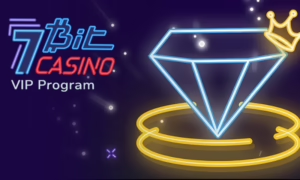The Mathematics of Blackjack

Blackjack is one of the most popular gambling card games. It is often hailed for being one of the few games where the player can get an edge over the house. This varies within the different variations and playing rules, but nonetheless, it is still one of more favorable games for the player. To get a picture of the probabilities behind Blackjack, the house edge, and how a player may favor their odds, we take a look at the mathematics of blackjack.
Basic Assumptions
To explain blackjack mathematics, we will look at a Blackjack game played with one standard deck.
- This deck pays 1:1 when a player beats the dealer
- 3:2 payed immediately when a player gets Blackjack (21 on the first 2 cards, unless the dealer also gets a Blackjack)
- Returns the bets when there is a “push” or a tie (when the dealer and player have the same numerical value in their hands)
- Dealer stands on 17.
- NOTE: this is the most basic example for illustration purposes and most casinos will have different rules which improve their edge, such as paying 6:5 for Blackjack.
The first and easiest probabilities to look at are those of “busting” after being dealt the first two cards. That is, asking for a third card and going over 21:
| Total Hand Value | Probability of Going Bust |
|---|---|
| 21 | 100% |
| 20 | 92% |
| 19 | 85% |
| 18 | 77% |
| 17 | 69% |
| 16 | 62% |
| 15 | 58% |
| 14 | 56% |
| 13 | 39% |
| 12 | 31% |
| 11 or less | 0% |
Likelihood of Hitting a Blackjack on the First 2 Cards
Here are the possible initial 2-card hands and their probability of being dealt:
| Two Card Combination | Frequency % | Description |
|---|---|---|
| Natural 21 Blackjack | 4.8% | An ace and a 10, J, Q, K |
| Hard Standing (17 – 20) | 30.0% | Two cards that sum 17-20, neither of which is an ace |
| Decision Hands (2-16) | 38.7% | Any hard hand (two non-ace cards) 16 or lower and any soft hand (at least one card is an ace and the other is 9 or lower) |
| No Bust | 26.5% | Any soft hand (Ace plus any card lower than ten) or hard hand (any non-ace cards) summing less than 11. |
| Total (all two card hands) | 100% |
How the House Improves its Edge at Blackjack
Here is where the house can improve their edge by including more decks. The probability of hitting a Blackjack is reduced from 4.83% to 4.78%. Even though the proportion of cards remains the same when an additional deck is added (4/52 cards are aces in 1 deck = 8/104 cards are aces in 2 decks), the probability of getting a certain hand is not the same (think about removing 1 of four aces in the first deck vs removing 1 out of 8 aces in the case of two decks).
The house can also improve its edge by paying less whenever a player is dealt a Blackjack. While the likelihood of a payout is the same, the payout will be less and the house will increase its edge.
The third basic measure to understand is to look at what the dealer’s final hand will be. Given that the dealer in this case must hit on 16 and stand on 17, the only possible outcomes are that the dealer will have a hand between 17 and 21, or a bust in the following proportions:
| Dealer Final Hand | Probability of Getting Final Hand |
|---|---|
| Natural Blackjack | 4.82% |
| 21 (more than 2 cards) | 7.36% |
| 20 | 17.58% |
| 19 | 13.48% |
| 18 | 13.81% |
| 17 | 14.58% |
| Non-Bust (less than 21) | 71.63% |
| Bust (more than 21) | 28.37% |
Optimizing your Hand
Given this conclusion, and the knowledge of one of the cards that the dealer holds, a player’s own hand, and the payouts, a strategy can be developed to optimize a player’s earning at blackjack and reduce the house edge from about 8% to below 1%. Such a strategy was developed and is called the basic strategy:
| Dealer’s Up Card | Dealer’s Odds of Busting | Player Advantage Percentage |
|---|---|---|
| 2 | 35.30% | 9.8% |
| 3 | 37.56% | 13.4% |
| 4 | 40.28% | 18.0% |
| 5 | 42.89% | 23.2% |
| 6 | 42.08% | 23.9% |
| 7 | 25.99% | 14.3% |
| 8 | 23.86% | 5.4% |
| 9 | 23.34% | -4.3% |
| 10 | 21.43% | -16.9% |
| J | 21.43% | -16.9% |
| Q | 21.43% | -16.9% |
| K | 21.43% | -16.9% |
| A | 11.65% | -16.0% |
How does Card Counting Work?
There are numerous websites where one can find the basic strategy when playing blackjack under different rules or numbers of decks. However, these do not take into consideration the changing odds after cards are dealt. For that, there is a system of card counting which was developed to increase the probability of winning. This strategy allows a player to gain enough of an edge to beat the house in the long run. But that is a subject for another blog post and is not particularly relevant to online gaming.







